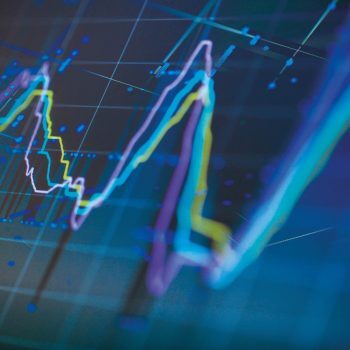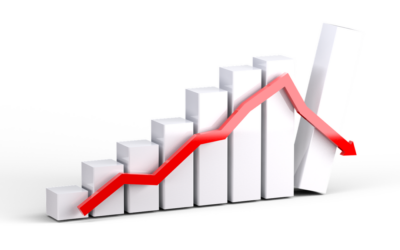Global dividends rose to a record $606.1bn, up 8.2% on an underlying basis, driven by record European payouts and new dividend payers Alphabet and Meta, according to the latest Janus Henderson Global Dividend Index.
There was broad-based growth in Q2 with 92% of companies globally raising dividends or holding them steady, and one-third of sectors saw double-digit underlying growth.
Strong seasonal highs in Europe (ex UK) and Japan
The second quarter marks Europe’s seasonal high point, although the $204.6bn payout total marked an all-time record for the region as payouts jumped 7.7% on an underlying and headline basis year-on-year. More than half the growth in European dividends came from banks, which have benefitted from the higher interest rate environment. France, Italy, Switzerland and Spain all saw record dividends. In Germany, payouts fell 1.2% year-on-year, caused by a large cut by pharmaceutical company Bayer, yet its largest payer Allianz increased its dividend by a fifth. 90% of European companies increased dividends or held them steady year-on-year.
The second quarter is also seasonally important in Japan. In Q2 2024, payouts soared by one seventh on an underlying basis to a new yen record, but the yen’s weakness meant the headline growth rate was just 1.4%, taking the dollar total paid to $37.2bn. The largest contribution to growth came from Toyota Motor, Japan’s largest dividend payer, which made one of the largest increases following record profits in its latest financial year. Elsewhere in Asia Pacific, payouts were flat in Hong Kong and significantly lower in Australia owing to a cut from Woodside Energy. Singapore, Taiwan and South Korea all saw double-digit growth.
Stunted growth in UK
UK dividends rose just 0.7% on an underlying basis in the second quarter of the year, to $36.7bn. The slow growth rate reflects cuts in the mining sector, specifically from Glencore, where the impact of its rebased dividend policy has an impact. Excluding the mining sector, however, underlying growth was 8.6 percentage points higher year-on-year, showing just how significant the impact of that one sector has been. The headline growth rate of 13.8% reflects the large special dividend paid by HSBC, which distributed the proceeds of the sale of its Canadian business.
Strength in banks
Banks were the most important driver of higher payouts in Q2, accounting for one third of the underlying increase year-on-year. European banks were the main contributors, but the trend was evident globally. Insurers, media companies, vehicle manufacturers (especially in Japan) and telecoms were also important contributors to growth in the second quarter.
US sees lowest level of special dividends in three years
US companies paid their shareholders $161.5bn in dividends in the second quarter, up by 8.6% on an underlying basis. The lowest level of special dividends in three years meant headline growth was slower, though at 7.1% it was still ahead of the global average. Companies paying their first dividends ever this year, including Google and Facebook owners Alphabet and Meta respectively, made the most significant contribution to growth, boosting the US underlying total by 3.6 percentage points. The boost from these newcomers will continue for the rest of this year, keeping US payout growth ahead of the global average.
An upgraded forecast
After a strong second quarter, and to allow for the strong contribution dividend newcomers could make this year, Janus Henderson is upgrading its forecast for 2024 to a record $1.74 trillion, up 6.4% compared to 2023 on an underlying basis and equivalent to a headline increase of 4.7%.
Jane Shoemake, Client Portfolio Manager on the Global Equity Income team at Janus Henderson, said: “We had optimistic expectations for the second quarter, yet the picture was even brighter than predicted, thanks to strength in Europe, the US, Canada and Japan. Around the world, economies have generally borne the burden of higher interest rates well; inflation has slowed while economic growth has been better-than-expected. Companies have also proved resilient and, in most industries, continue to invest for future growth. The banking sector in particular is enjoying strong margins and limited credit impairments, which has bolstered profits and generated a lot of cash for dividends.
“The initiation of dividends from big US media-technology companies Meta and Alphabet, along with China’s Alibaba, is a really positive signal that will boost global dividend growth by 1.1% this year. These companies are following a path well-trodden by growth industries over the last couple of centuries, reaching a point of maturity where dividends are a natural route for returning surplus cash to shareholders. Paying dividends will also broaden their appeal to investors for whom dividends are a vital part of their investment strategy and it may also encourage more companies to follow suit.”
Andrew Jones, Portfolio Manager on the UK Responsible Income Fund, added: “It was encouraging to see the underlying growth rate of the UK market improve during the quarter once the effects of the mining sector are stripped out. With continued good dividends expected from banks and the UK economic backdrop improving, we continue to see a favourable outlook for UK income in the second half of the year.”





